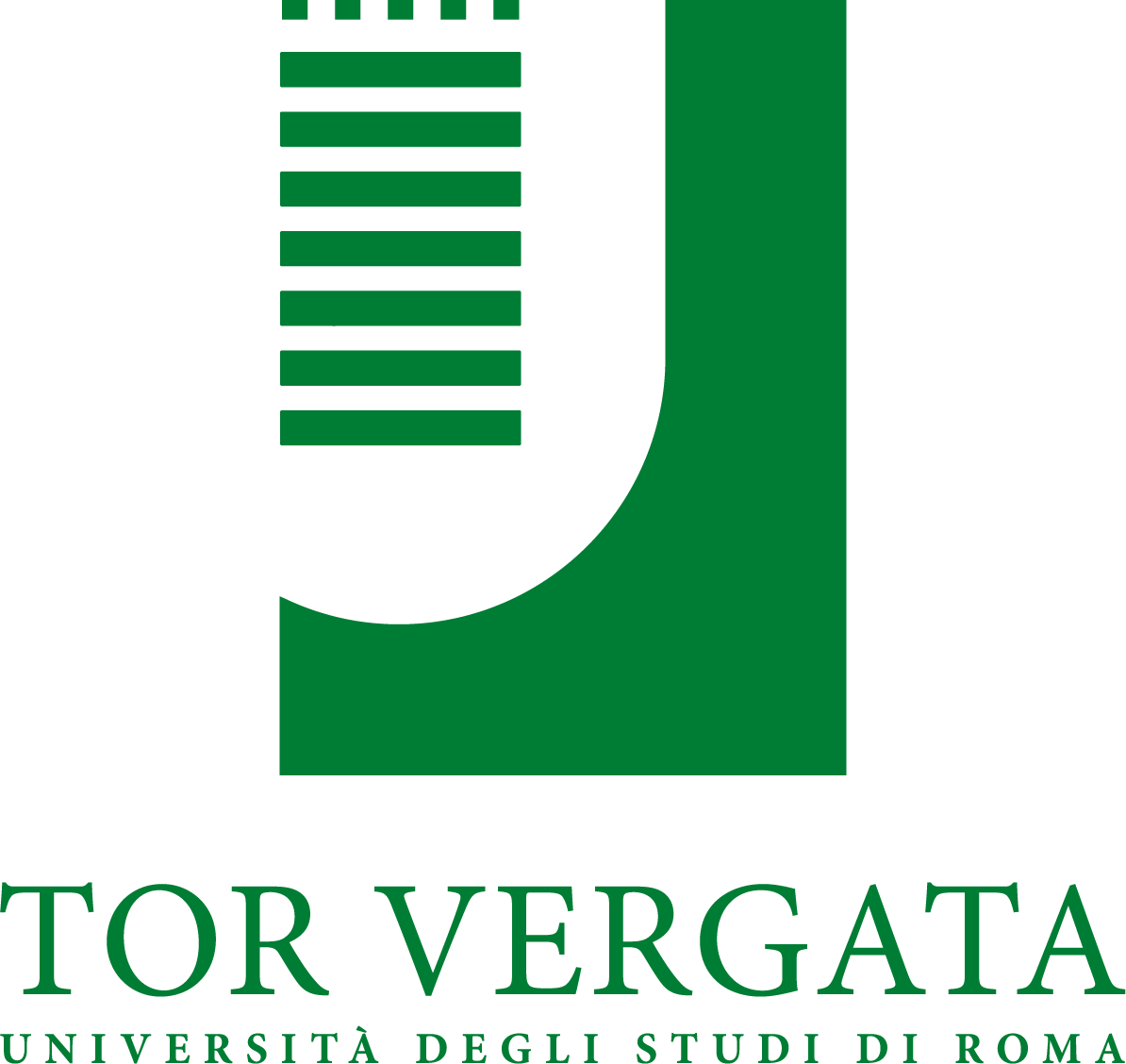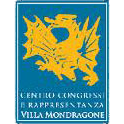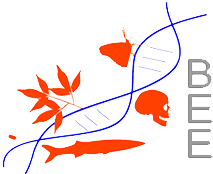Curriculum Vitae
Nato a Roma il 29 giugno 1953
1976 Laurea in Scienze Biologiche 110/110 e lode Università di Roma “La Sapienza”, Italia.
Formazione post-laurea presso istituzioni italiane ed estere con l’elenco degli incarichi professionali:
2000-oggi Professore Ordinario Università di Roma “Tor Vergata”, Roma, Italia
2005-oggi Board of Directors European Cell Death Organization Europa
1998-oggi Direttore Laboratorio di Biologia Cellulare Instituto Nazionale per le Malattie Infettive “Lazzaro Spallanzani” Roma, Italia
2012-oggi Direttore Centro di Biotecnologie Farmaceutiche Università di Roma “Tor Vergata” Roma. Italia
2013-2017 Membro Consiglio di Amministrazione Università di Roma “Tor Vergata” Roma, Italia
2004-2008 Coordinatore Marie-Curie, Communità Europea Brussels, Belgium
2004-2013 Presidente Corso di Laurea in Biotecnologie della Facoltà di Science MM.FF.NN. dell’Università di Roma “Tor Vergata”Roma, Italia
2004-2008 Coordinatore Marie-Curie, Communità Europea Brussels, Belgium
2004-2007 Membro Consiglio di Amministrazione SpaXen Italia Srl Roma-New York, USA
1994-2006 Board of Directors International Cell Death Society New York, USA
2002-2005 Presidente European Cell Death Organization Europa
1994-2002 Vice Presidente European Cell Death Organization Europa
1998-1999 Professore Associato Università della Tuscia Viterbo, Italia
1984-1986 Postdoctoral Fellow NIDR, National Institute of Health Bethesda, USA
1984-1998 Ricercatore Università di Roma “Tor Vergata”, Roma, Italia
1978- Postdoctoral Fellow Dept of Pathology, Karolinska Stoccolma, Svezia
Attività di revisore di finanziamenti per le seguenti agenzie:
National Science Foundation (NSF, USA),
Medical Research Council” (MCR; Inghilterra),
International Human Frontier Science Program (HFS; Francia),
Wellcome Trust (U.K.),
Irish Science Foundation (Irlanda)
Associazione Italiana Ricerca sul Cancro (AIRC), Italia.
Ministero della Salute,Italia.
Ministero dell’Università, Italia.
University of Ghent, Belgio.
Ministry of Education and Science (Russia).
Swiss National Science Foundation (Svizzera).
Alzheimer’s Research Trust (U.K.).
Agence Nationel Recherche (France).
FWO (Belgio).
Premi
Data Istituzione Descrizione Nazione
2013 International Cell Death
Society Career Award U.S.A.
2010 Gordon Research
Conference Elected Chair U.S.A.
2007 “Japanese Society for JSPS Award Giappone
Promotion of Science”
2007 “Descartes Award” Europen Commission Europa
2007 Keynote speaker 7th International Meeting of the
Slovenian Biochemical Society Slovenia
2006 Member of Expert Group Ministero della sanità Italia
2005 Keynote speaker International Immunology
and Reumathology Meeting Taiwan
1999-2005 Rappresentante Italiano EU Cost Action 844 Belgio
Appartenenza ad organizzazioni scientifiche e/o professionali
Date Organizzazione Posizione
2010-oggi Cell Death & Disease “Deputy Editor”
2008-oggi Journal Biomedicine and Biotechnology “Editor”
1993-oggi Cell Death Differentiation (Nature Publishing Group) “Fondatore and Editor”
2005 Nomenclature Committee on Cell Death (NCCD) “Membro”
2000-2005 European Science Foudation “Transglutaminasea
and Protein Crosslinking Programme” “Board Member”
1994-oggi European Cell Death Organization Membro Fondatore
Attività editoriali
Il Prof. Piacentini è uno dei fondatori del rivista “Cell Death and Differentiation” (I.F. 2010= 8.6)
e Cell Death & Disease (I.F. 2010= 6.0) per la quali opera come Receiving Editor e Section Editor ininterrottamente dal 1994.
Nel 2007 ha svolto il ruolo di “Guest Editor” per Methods in Enzymology.
Dal 2008 fà parte dell’Editorial Board della rivista “Journal of Biomedicine and Biotechnology”
(I.F. 2007 2.0)
Opera come revisore delle seguenti riviste internazionali: Biochemical and Biophysical Research Communication, Brain Resarch, Cancer Research, Cancer Cell; Cell Death and Differentiation, Experimental Cell Research, FEBS Letters, Journal of Biological Chemistry, Journal of Cell Biology, Journal of Cellular and Molecular Medicine, Journal of Cell Science, Journal of Immunology, Journal of Neurochemistry, Journal of Physiology, International Immunology, International Journal of Cancer, Oncogene, Molecular and Cellular Biology, Nature.
Brevetti
1998 US Patents n. 5750360 Method for quantitatively measuring apoptosis
The invention encompasses methods of detecting
and/or quantifying ε(γ-glutamyl)lysine isodipeptide
by catalytically releasing lysine, then measuring free lysine.
Altre attività
Il prof Mauro Piacentini ha organizzato numerosi Congressi Internazionali:
-”Apoptosis in AIDS and Cancer” dicembre 1993, Parigi, Francia.
-Advanced Courses on “Cell Differentiation and Death” Maggio1994, Erice, Italy.
-”Transglutaminases and Protein Cross-linkings Reactions” Agosto 1994, Debrecen, Hungary.
-”New Cancer Strategies: Apoptotic Based-Therapies” Settembre 1994, San Diego (CA), U.S.A.
-3nd Workshop “Biochemistry of Neuroectodermal Tumours”, June 1995 Roma, Italy.
-1st International Conference on “Apoptosis in Skeletal and Cardiac Muscles” Giugno,
Abano Terme, Italia.
-4th Euroconference on “Apoptosis or Programmed Cell Death” Settembre 1996, Capri, Italia.
-1st Course on “Molecular Mechamisms of Apoptosis” Maggio 1997, Tucuman, Argentina.
-”Transglutaminases and Protein Cross-linkings Reactions” Settembre 2000, Lione, France.
- 8-14th Euroconferences on “Apoptosis or Programmed Cell Death” held in:Davos 2000 (Svizzera); Vienna 2001 (Austria); Paris 2002 (Francia); Gent 2003 (Belgio), Chania 2004, (Grecia); Budapest 2005 (Ungheria); Chia Lugana 2006 (Italia); Portoroz (2007) Slovenia.
-1st Workshop on Programmed Cell Death in Plants, Agosto, Avana 2004.
-1st Curso on “Cellular and Molecular Basis of Cell Death” Giugno, Avana 2005.
-1st Workshop on “Proteomics in Translational Research” Novembre 2005, Rome.
-”Transglutaminases and Protein Cross-linkings Reactions” Settembre 2007, Marrachesh, Marocco.
-1st Workshop “Molecular and Cellular Mechanisms of Autophagy” Giugno 2011, San Paolo, Brasile
-2nd Gordon Research Conference on “Transglutaminases in Human Diseases”, Luglio 2012, Charlotte, USA.
-20th Euroconference on “Apoptosis or Programmed Cell Death” Settembre 2012, Roma., Italia.
Attività scientifica
Mauro Piacentini è autore di oltre 240 lavori a stampa su riviste Internazionali ad elevato indice di impatto con un numero complessivo di citazioni (secondo l’Institute for Scientific Informations) superiore 12,500 e un fattore di impatto totale superiore a 1,300 e un H- Index 061.
Recensioni sui lavori pubblicati dal Prof. Piacentini sono stati pubblicati sulle seguenti riviste internazionali ad elevato indice di impatto:
Journal of National Cancer Institute, Settembre, 2004;
Cell Death and Differentiation, Novembre, 2004;
Nature Cell Biology, Luglio 2007.
Nature Business Exchange, Settembre 2011.
Argomenti di Ricerca
Gli studi sono indirizzati alla comprensione dei meccanismi molecolari alla base della morte cellulare e dell’autofagia.
-Ruolo della Transglutaminasi di tipo 2 nella morte cellulare (apoptosi) e nella autofagia in condizioni fisiologiche e nella patogenesi delle malattie come il cancro, le infezioni virali e le malattie neurodegenerative.
-Coinvolgimento della Transglutaminasi di tipo 2 nella regolazione della funzionalità mitocondriale e nella mitofagia.
Finanziamenti ricevuti per attività di ricerca:
Agenzie Internazionali:
il Prof Piacentini ha ottenuto 10 finanziamenti dall’UE per un totale superiore ai 3.5 Milioni Euro
-1992-1995 Concerted Action Contract Nr. BMH1-CT92-1571 (Partner),
-1997-2000 EC Copernicus project Contract Nr. ICI-CT97-0901 (Partner)
-1995-1998 EU grant “IV Framework” Contract Nr. BI04-CT95-0207 (Partner)
“Increasing the cell culture productivity by control of programmed cell death (apoptosis)”
-1999-2003 EU grant “V Framework” Contract Nr. QLG1-CT-1999-00739 (Partner)
“Fundamental mechanisms of apoptosis/cell death regulation in normal and cancer cells”
Acronim: Apoptosis mechanisms
-2002-2005 EU grant “V Framework” Contract Nr. QLK3-CT-2002-02017 (Partner)
“Clearance of apoptotic cells: discovery of autoantigens and therapy for autoimmune diseases”
Acronim: APOCLEAR
-2004-2008 Marie Curie Conferences and Training Courses, Contract Nr. MSCF-CT-2003-504454
(Co-ordinator) “Euroconference on Programmed Cell Death”
-2006-2009 Marie Curie, Research Training Network, Contract Nr. MRTN – CT – 2006 – 036032. (Partner) “Transglutaminases: role in pathogenesis, diagnosis and therapy”
-2007 European Commission “Descartes Award”.
-2008-2012 EU grant “VII Framework” Contract Nr. FP7-Health-2007 A (Partner)
“Apoptosis biology system application to AIDS and cancer” Acronim: APO-SYS
-CHDI “Dissecting the Role of TG2 in Huntington Diseases” Los Angeles USA
-2011-2015 Marie Curie, Research Training Network, “Transglutaminases: role in pathogenesis, diagnosis and therapy” Contract Nr. MRTN – CT –289964. (Partner)
Agenzie Nazionali
Dal 1988 ad oggi il Prof. Piacentini ha ottenuto numerosi finanziamenti dalle seguenti agenzie nazionali, per un totale di superiore 3.0 milioni di euro:
-Consiglio Nazionale delle Ricerche
-Ministero dell’ Università
-Ministero della Salute
-Associazione Italiana per la Ricerca sul Cancro (AIRC)
-Telethon
-Banca S.Paolo di Torino
Pubblicazioni 2011-2014
2011
1. Extracellular ATP acts on P2Y2 purinergic receptors to facilitate HIV-1 infection.Séror C, Melki MT, Subra F, Raza SQ, Bras M, Saïdi H, Nardacci R, Voisin L, Paoletti A, Law F, Martins I, Amendola A, Abdul-Sater AA, Ciccosanti F, Delelis O, Niedergang F, Thierry S, Said-Sadier N, Lamaze C, Métivier D, Estaquier J, Fimia GM, Falasca L, Casetti R, Modjtahedi N, Kanellopoulos J, Mouscadet JF, Ojcius DM, Piacentini M, Gougeon ML, Kroemer G, Perfettini JL.J Exp Med. 208(9):1823-34.
2. Molecular definitions of cell death subroutines: recommendations of the Nomenclature Committee on Cell Death 2012. Galluzzi L, Vitale I, Abrams JM, Alnemri ES, Baehrecke EH, Blagosklonny MV, Dawson TM, Dawson VL, El-Deiry WS, Fulda S, Gottlieb E, Green DR, Hengartner MO, Kepp O, Knight RA, Kumar S, Lipton SA, Lu X, Madeo F, Malorni W, Mehlen P, Nuñez G, Peter ME, Piacentini M, Rubinsztein DC, Shi Y, Simon HU, Vandenabeele P, White E, Yuan J, Zhivotovsky B, Melino G, Kroemer G. Cell Death Differ.
3. Nicotinic acid adenine dinucleotide phosphate (NAADP) regulates autophagy in cultured astrocytes. Pereira GJ, Hirata H, Fimia GM, do Carmo LG, Bincoletto C, Han SW, Stilhano RS, Ureshino RP, Bloor-Young D, Churchill G, Piacentini M, Patel S, Smaili SS. J Biol Chem. 286(32):27875-81
4. TG2 transamidating activity acts as a reostat controlling the interplay between apoptosis and autophagy. Rossin F, D’Eletto M, Macdonald D, Farrace MG, Piacentini M. Amino Acids. 2011 Apr 10.
5. Role and predictive strength of transglutaminase type 2 expression in premalignant lesions of the cervix. Del Nonno F, Pisani G, Visca P, Signore F, Grillo LR, Baiocchini A, Garbuglia AR, Sepe S, Piacentini M, Falasca L. Mod Pathol. 24(6):855-65.
6. Mitochondrial BCL-2 inhibits AMBRA1-induced autophagy. Strappazzon F, Vietri-Rudan M, Campello S, Nazio F, Florenzano F, Fimia GM, Piacentini M, Levine B, Cecconi F. EMBO J. 30(7):1195-208.
7. Oncogenic B-RAF signaling in melanoma impairs the therapeutic advantage of autophagy inhibition. Armstrong JL, Corazzari M, Martin S, Pagliarini V, Falasca L, Hill DS, Ellis N, Al Sabah S, Redfern CP, Fimia GM, Piacentini M, Lovat PE. Clin Cancer Res. 17(8):2216-26.
8. Plasmodium falciparum liver stage antigen-1 is cross-linked by tissue transglutaminase. Nicoll WS, Sacci JB, Rodolfo C, Di Giacomo G, Piacentini M, Holland ZJ, Doerig C, Hollingdale MR, Lanar DE. Malar J. 10:14.
9. Unleashing the Ambra1-Beclin 1 complex from dynein chains: Ulk1 sets Ambra1 free to induce autophagy. Fimia GM, Di Bartolomeo S, Piacentini M, Cecconi F. Autophagy. 7(1):115-7.
10. Transglutaminase 2 at the crossroads between cell death and survival. Piacentini M, D’Eletto M, Falasca L, Farrace MG, Rodolfo C. Adv Enzymol Relat Areas Mol Biol. 78:197-246.
2012
11. Autophagy Protects Cells from HCV-Induced Defects in Lipid Metabolism. Vescovo T, Romagnoli A, Perdomo AB, Corazzari M, Ciccosanti F, Alonzi T, Nardacci R, Ippolito G, Tripodi M, Garcia-Monzon C, Lo Iacono O, Piacentini M, Fimia GM. Gastroenterology. 142(3):644-653.e3.
12. Liver protein profiling in chronic hepatitis C: Identification of potential predictive markers for interferon therapy outcome. Basulto Perdomo A, Ciccosanti F, Lo Iacono O, Angeletti C, Corazzari M, Daniele N, Testa A, Pisa R, Ippolito G, Antonucci G, Fimia GM, Piacentini M. J Proteome Res. 11(2):717-27.
13. Beclin1: A role in membrane dynamics and beyond. Wirawan E, Lippens S, Vanden Berghe T, Romagnoli A, Fimia GM, Piacentini M, Vandenabeele P. Autophagy. 1; 8 (1).
14. Type 2 transglutaminase is involved in the autophagy-dependent clearance of ubiquitinated proteins. D’Eletto M, Farrace MG, Rossin F, Strappazzon F, Giacomo GD, Cecconi F, Melino G, Sepe S, Moreno S, Fimia GM, Falasca L, Nardacci R, Piacentini M. Cell Death Differ. 19(7):1228-38.
15. Toxic effects of expanded ataxin-1 involve mechanical instability of the nuclear membrane. Mapelli L, Canale C, Pesci D, Averaimo S, Guizzardi F, Fortunati V, Falasca L, Piacentini M, Gliozzi A, Relini A, Mazzanti M, Jodice C. Biochim Biophys Acta. 1822(6):906-17.
16. The reticulons: Guardians of the structure and function of the endoplasmic reticulum. Di Sano F, Bernardoni P, Piacentini M. Exp Cell Res. 318(11):1201-7.
17. Proteolysis of Ambra1 during apoptosis has a role in the inhibition of the autophagic pro-survival response. Pagliarini V, Wirawan E, Romagnoli A, Ciccosanti F, Lisi G, Lippens S, Cecconi F, Fimia GM, Vandenabeele P, Corazzari M, Piacentini M. Cell Death Differ. 19(9):1495-504.
18. Specific T Cells Restore the Autophagic Flux Inhibited by Mycobacterium tuberculosis in Human Primary Macrophages. Petruccioli E, Romagnoli A, Corazzari M, Coccia EM, Butera O, Delogu G, Piacentini M, Girardi E, Fimia GM, Goletti D. J Infect Disease. 205(9):1425-35.
19. Dismantling the autophagic arsenal when it is time to die: Concerted AMBRA1 degradation by caspases and calpains. Corazzari M, Fimia GM, Piacentini M. Autophagy 1;8(8).
20. Reticulon Protein-1C: A New Hope in the Treatment of Different Neuronal Diseases. Di Sano F, Piacentini M. Int J Cell Biol. 2012, 651805.
21. ESX-1 dependent impairment of autophagic flux by Mycobacterium tuberculosis in human dendritic cells. Romagnoli A, Etna MP, Giacomini E, Pardini M, Remoli ME, Corazzari M, Falasca L, Goletti D, Gafa V, Simeone R, Delogu G, Piacentini M, Brosch R, Fimia GM, Coccia EM. Autophagy 1;8(9).
22. Guidelines for the use and interpretation of assays for monitoring autophagy. Klionsky DJ, et al. Autophagy 8(4):445-544.
23 An Immunosurveillance Mechanism Controls Cancer Cell Ploidy Senovilla L, Vitale I, Martins I, Tailler M, Pailleret C, Michaud M, Galluzzi L, Adjemian S, Kepp O, Niso-Santano M, Shen S, Mariño G, Criollo A, Boilève A, Job B, Ladoire S, Ghiringhelli F, Sistigu A, Yamazaki T, Rello-Varona S, Locher C, Poirier-Colame V, Talbot M, Valent A, Berardinelli F, Antoccia A, Ciccosanti F, Fimia GM, Piacentini M, Fueyo A, Messina NL, Li M, Chan CJ, Sigl V, Pourcher G, Ruckenstuhl C, Carmona-Gutierrez D, Lazar V, Penninger JM, Madeo F, López-Otín C, Smyth MJ, Zitvogel L, Castedo M, Kroemer G
Science. 337(6102):1678-84.
24. Applying proteomic technology to clinical virology. Mancone C, Ciccosanti F, Montaldo C, Perdomo AB, Piacentini M, Alonzi T, Fimia GM, Tripodi M. Clin Microbiol Infect. (1):23-8.
25. Ambra1 at the crossroad between autophagy and cell death. Fimia GM, Corazzari M, Antonioli M, Piacentini M. Oncogene. 32(28):3311-8.
2013
26. Molecular mechanisms of selective autophagy. Fimia GM, Kroemer G, Piacentini M. Cell Death and Differentiation. (1):1-2.
27. Beninati S, Facchiano F, Piacentini M. Transglutaminases: future perspectives. Amino Acids. 44(1):1-9.
28. Ambra1 knockdown in zebrafish leads to incomplete development due to severe defects in organogenesis. Benato F, Skobo T, Gioacchini G, Moro I, Ciccosanti F, Piacentini M, Fimia GM, Carnevali O, Valle LD. Autophagy. 9(4).
29. Goletti D, Petruccioli E, Romagnoli A, Piacentini M, Fimia GM. Autophagy in Mycobacterium tuberculosis infection: A passepartout to flush the intruder out? Cytokine Growth Factor Review Feb 7. doi:pii: S1359-6101(13)00003-8. 10.1016.
30.Nazio F, Strappazzon F, Antonioli M, Bielli P, Cianfanelli V, Bordi M, Gretzmeier C, Dengjel J, Fimia GM, Cecconi F. mTOR inhibits autophagy by controlling ULK1 ubiquitylation, self-association and function through AMBRA1 and TRAF6. Nature Cell Biology 15(4):406-16.
31. Bernardoni P, Fazi B, Costanzi A, Nardacci R, Montagna C, Filomeni G, Ciriolo MR, Piacentini M, Di Sano F. Reticulon1-C modulates protein disulphide isomerase function. Cell Death & Disease Apr 4;4:e581. doi: 10.1038/cddis.2013.113
32. Taglietti F, Principe L, Bordi E, D’Arezzo S, Di Bella S, Falasca L, Piacentini M, Stefani S, Petrosillo N. Telavancin and Daptomycin activity against methicillin-resistant Staphylococcus aureus strains after vancomycin resistance selection in vitro. Journal of Medical Microbiology 62:1101-2
33. Corazzari M, Fimia GM, Lovat P, Piacentini M. Why is Autophagy Important for Melanoma? Molecular Mechanisms and Therapeutic Implications. Seminar Cancer Biology Jul 12. doi:pii: S1044-579X(13)00063-1. 10.1016
34. Cervelli M, Bellavia G, D’Amelio M, Cavallucci V, Moreno S, Berger J, Nardacci R, Marcoli M, Maura G, Piacentini M, Amendola R, Cecconi F, Mariottini P. A New Transgenic Mouse Model for Studying the Neurotoxicity of Spermine Oxidase Dosage in the Response to Excitotoxic Injury. PLoS One. 19;8(6)
35. Lucá R, Averna M, Zalfa F, Vecchi M, Bianchi F, Fata GL, Del Nonno F, Nardacci R, Bianchi M, Nuciforo P, Munck S, Parrella P, Moura R, Signori E, Alston R, Kuchnio A, Farace MG, Fazio VM, Piacentini M, De Strooper B, Achsel T, Neri G, Neven P, Evans DG, Carmeliet P, Mazzone M, Bagni C. The Fragile X Protein binds mRNAs involved in cancer progression and modulates metastasis formation. EMBO Molecular Medicine 5(10):1523-1536.
2014
36. Sepe S, Nardacci R, Fanelli F, Rosso P, Bernardi C, Cecconi F, Mastroberardino PG, Piacentini M, Moreno S. Expression of Ambra1 in mouse brain during physiological and Alzheimer type aging. Neurobiolog of Aging 35(1):96-108.
37. Caspase-2 promotes cytoskeleton protein degradation during apoptotic cell death. Vakifahmetoglu-Norberg H, Norberg E, Perdomo AB, Olsson M, Ciccosanti F, Orrenius S, Fimia GM, Piacentini M, Zhivotovsky B. Cell Death and Disease 2013 Dec 5;4:e940. doi: 10.1038/cddis.2013.463.
Componenti del gruppo di ricerca e contatti
Federica Di Sano (Ricercatore)-federica.di.sano@uniroma2.it
Lucia Piredda (Ricercatore)-lucia.piredda@uniroma2.it
Carlo Rodolfo (Ricercatore)-carlo.rodolfo@uniroma2.it
Marco Corazzari (RTD)-marco.corazzari@inmi.it
Maria Grazia Farrace (funzionario tecnico)- grazia.farrace@uniroma2.it
Serafina Oliverio (funzionario tecnico)- oliverio@bio.uniroma2.it
Manuela Deletto (assegnista di ricerca)- manuela.deletto@gmail.com
Valentina Reali (assegnista di ricerca)- valentina1983v@libero.it
Federica Rossin (post-doc)- federicarossin@gmail.com
Serena Saladini (post-doc)- serena.saladini@live.it
Paola Giglio (dottoranda)- paolagiglio.pg@gmail.com
Laura Diaz Hidalgo (PhD student Marie Curie) manuela.deletto@gmail.com
Sara Altuntas (PhD student Marie Curie) saraaltuntas@gmail.com






Università di Tor Vergata